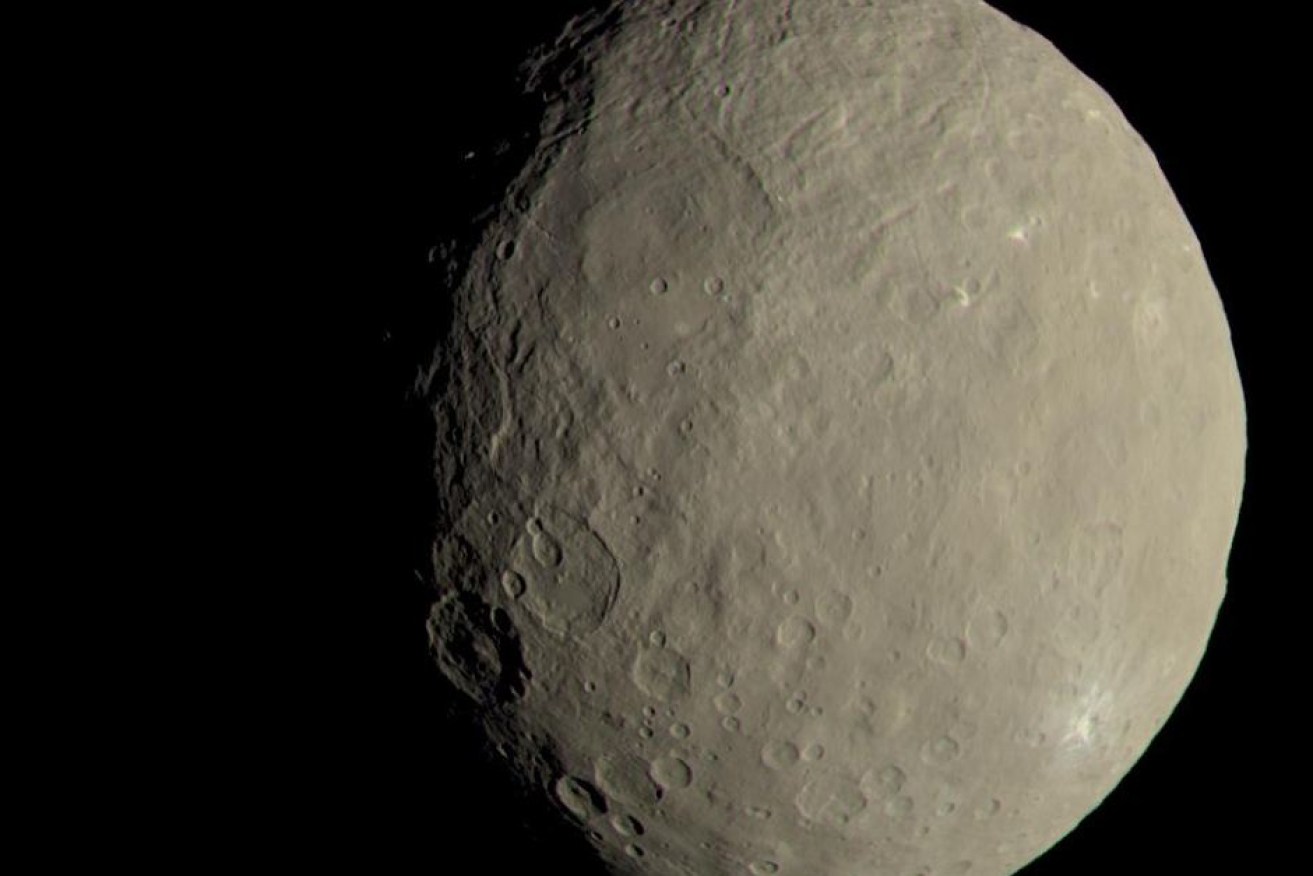Organic material discovered on dwarf planet Ceres hints at potential for life

Scientists have found signatures of organic material at two locations on Ceres. Photo: NASA
Simple organic molecules have been detected on the dwarf planet Ceres, adding to evidence it contains key ingredients essential for life.
The substances most likely evolved within Ceres, which is located in the asteroid belt between Mars and Jupiter, rather than being delivered by a cosmic collision, a team of scientists reported in the journal Science.
“Not only do we find these kinds of organics, but there are a lot of elements and molecules on Ceres that are typical of the environment that can favour life,” said the study’s lead author, Maria Cristina De Sanctis of the Institute for Space Astrophysics and Planetology in Rome.
Previous data from NASA’s Dawn spacecraft has indicated the dwarf planet has complex chemistry that includes water ice, ammonia-rich clays, and salty compounds or carbonates.
Dr De Sanctis said the team suspected the asteroid may also have organic material.
“Some meteorites, which are similar to the surface of Ceres, are very rich with organics, so we searched for organics,” Dr De Sanctis said.

Near-infrared image taken by Dawn spacecraft shows position of organic material on Ceres. Photo: NASA/UCLA/ASI/INAF/MPS/DLR/IDA/
Using the Dawn spacecraft’s visible and near-infrared spectrometer, the team identified the signatures of a group of simple hydrocarbon molecules near two craters on Ceres’ northern hemisphere.
However,Dr De Sanctis said there was not enough data to determine what kind of hydrocarbons were there.
Organics starting material for more complex compounds
Professor Chris Russell, principal investigator of the Dawn mission, said these molecules could be thought of as starting material for more complex compounds.
“We’re talking about pretty simple organic molecules rather than what people might think of as biological in any sense of the manner,” said Professor Russell, who is based at the University of California, Los Angeles.
Ceres — what we know
- Ceres is the largest object in the main asteroid belt
- It has a diameter of approximately 945 kilometres, making it the 33rd-largest known body in the solar system
- Although it sits in the inner solar system, it is more like an icy satellite from the outer solar system
- The surface is covered in craters
- There is evidence of vast concentrations of water ice, especially near the poles
- There are hints it had a subsurface ocean
- Two bright spots turned out be giant salt pans, consistent with briny water coming up from beneath the surface
- There are large amounts of salty compounds (eg. sodium carbonate) and ammonia-bearing clay minerals (phyllosilicates) on the surface
- A three-kilometre high mountain is likely to be an ice volcano that would have spewed salty water and mud
- It may have a weak, temporary atmosphere
Professor Russell said an even more important finding was that the organic material appeared to have formed as the dwarf planet evolved rather than being delivered by something smashing into it.
The organic molecules were found spread 100 kilometres in and around the Ernutet Crater as well as on the rim of another crater 400 kilometres away.
“There is an impact crater there, but this material is not correlated with the crater itself,” Professor Russell said.
“We also don’t think material like this would survive an impact.”
Instead, the scientists believe the material may have been produced by some internal process such as hydrothermal activity.
He said there was evidence on Ceres from other craters of geologic processes bringing brines and solutions up from the dwarf planet’s centre.
“We believe [the interior] is much more wet and mushy, so there are hydrothermal processes that can go on,” Professor Russell said.
Dr De Sanctis said the team now planned to see whether they could detect these molecules elsewhere on Ceres, which would help them understand more about how the dwarf planet formed.
– ABC








